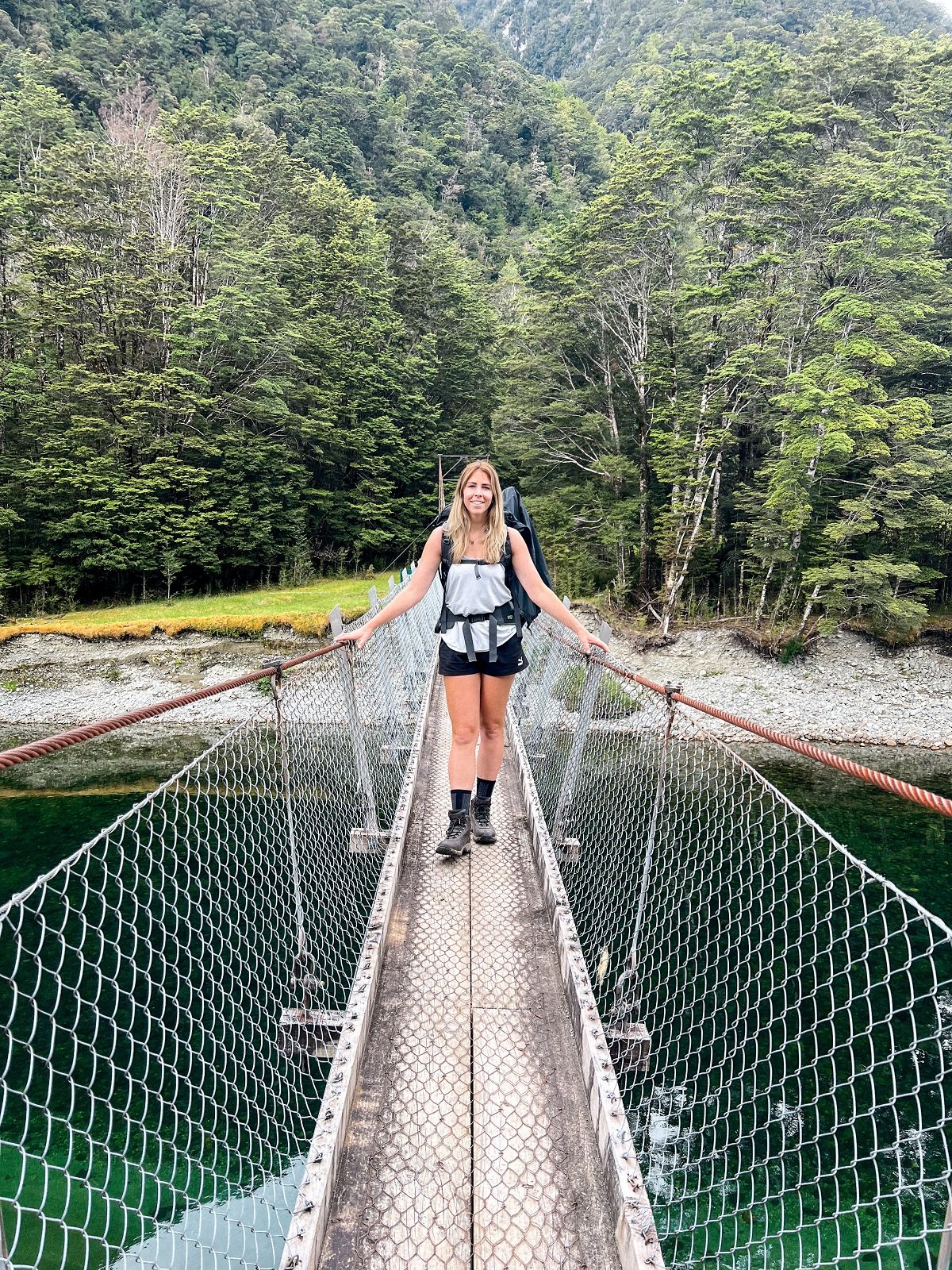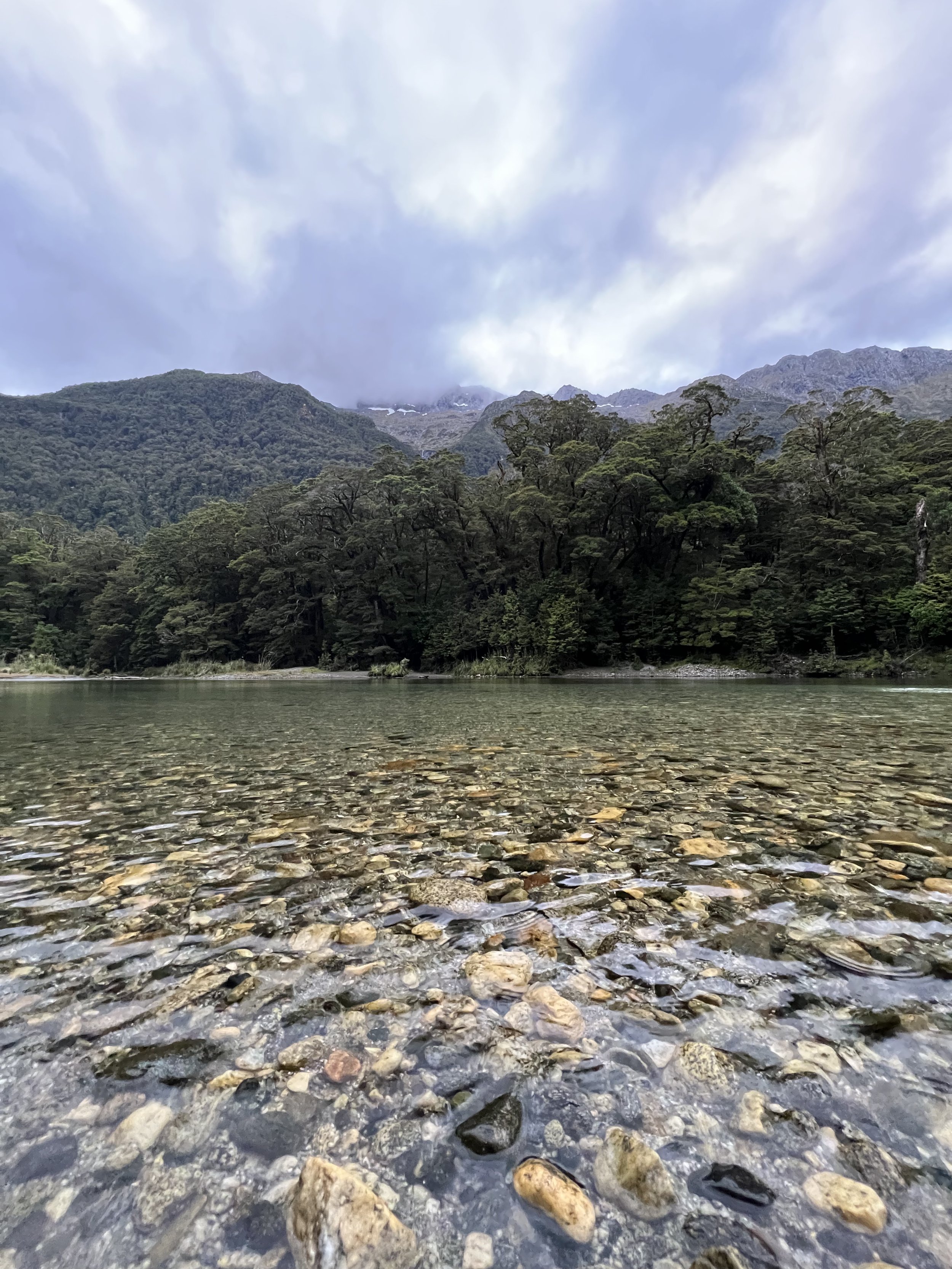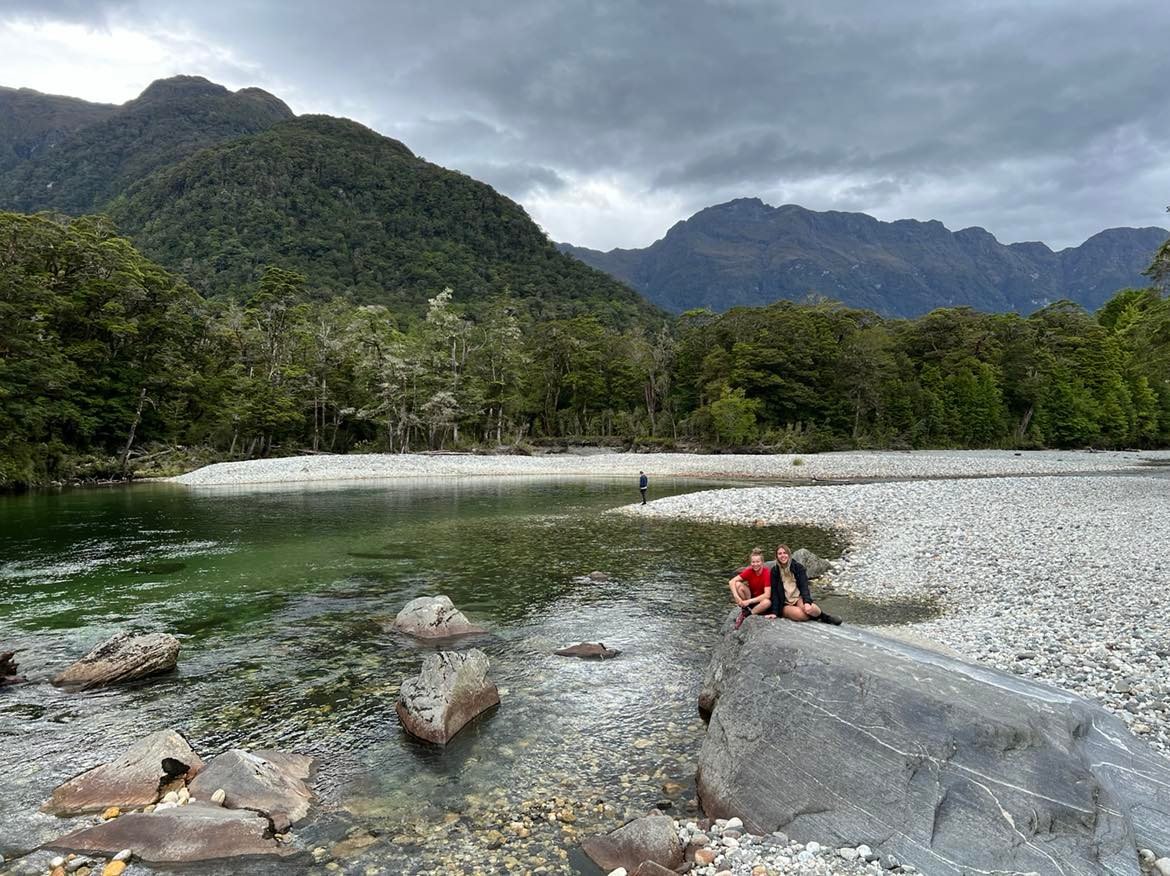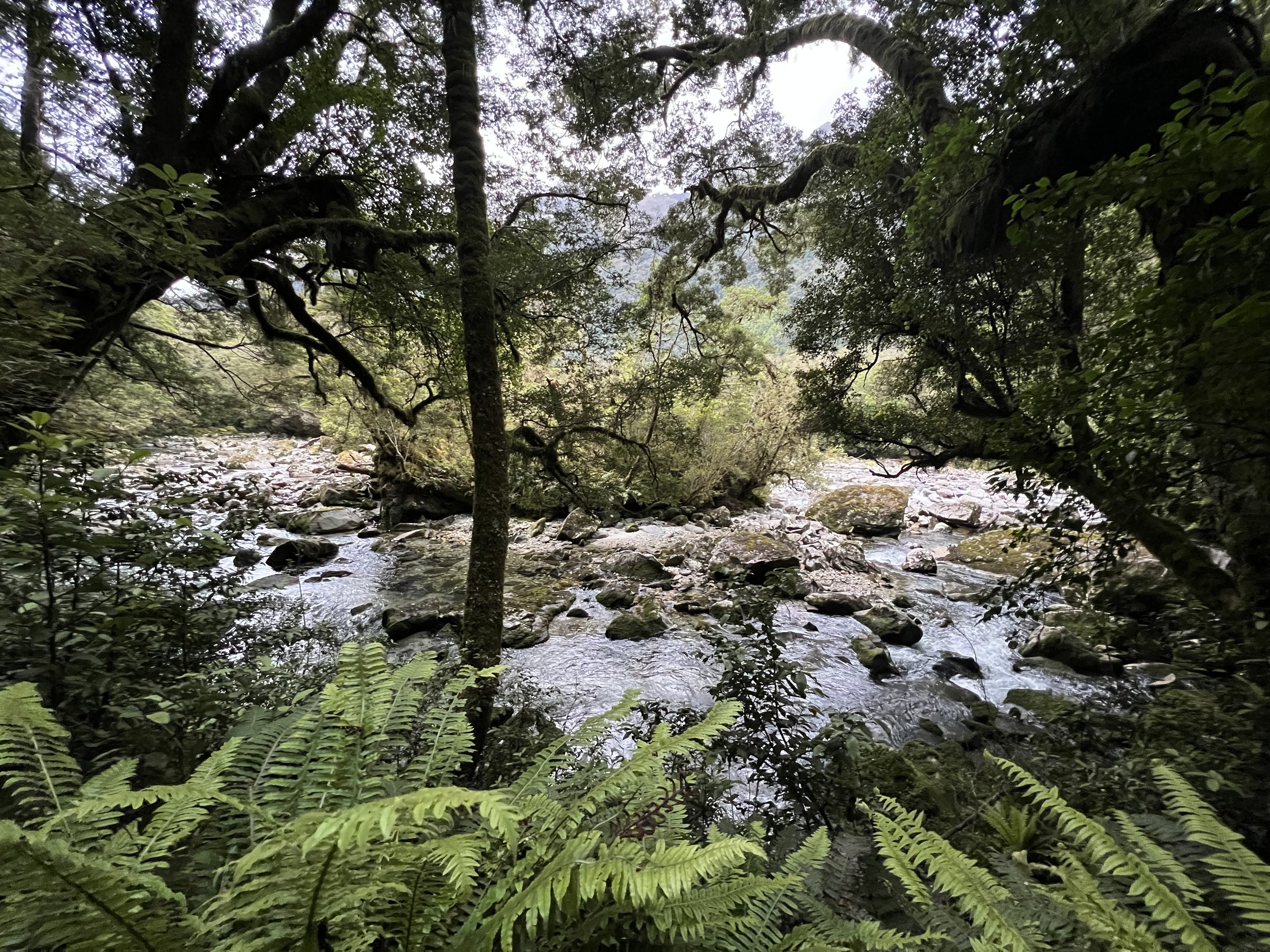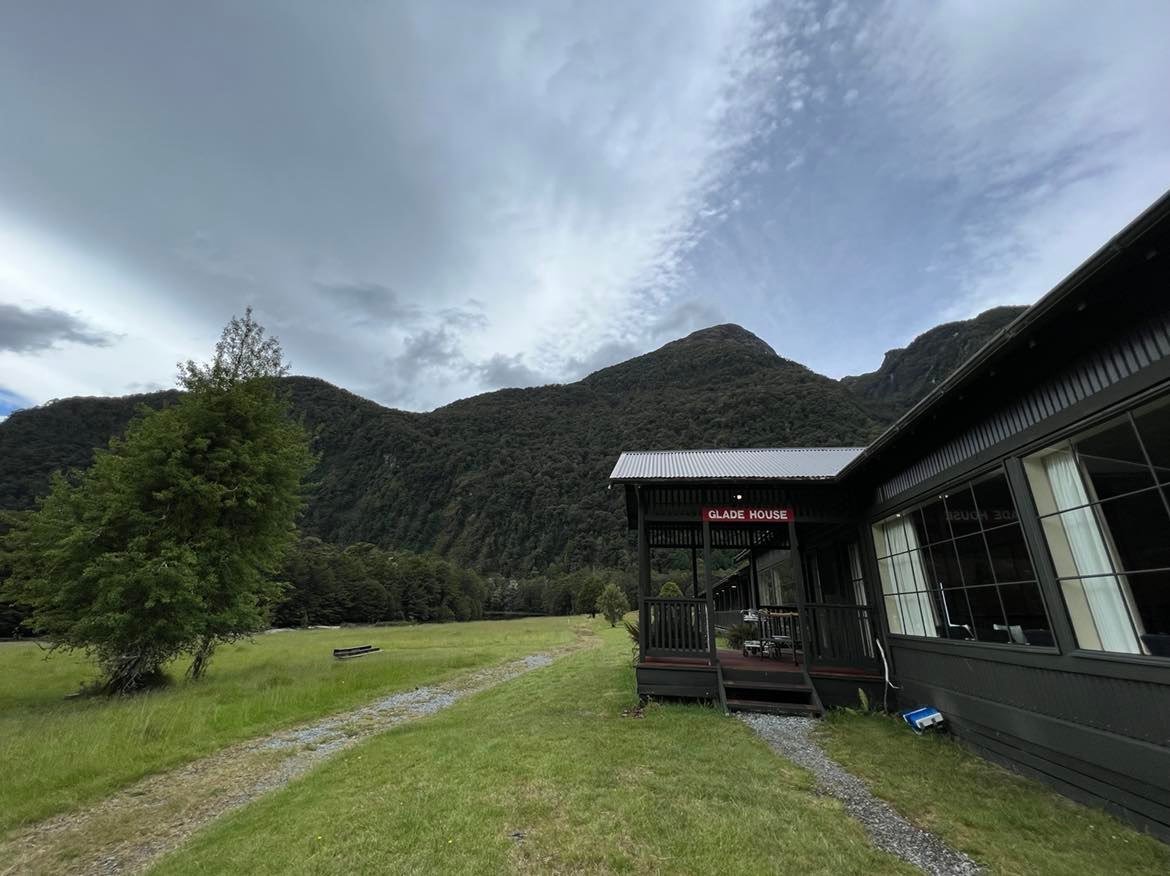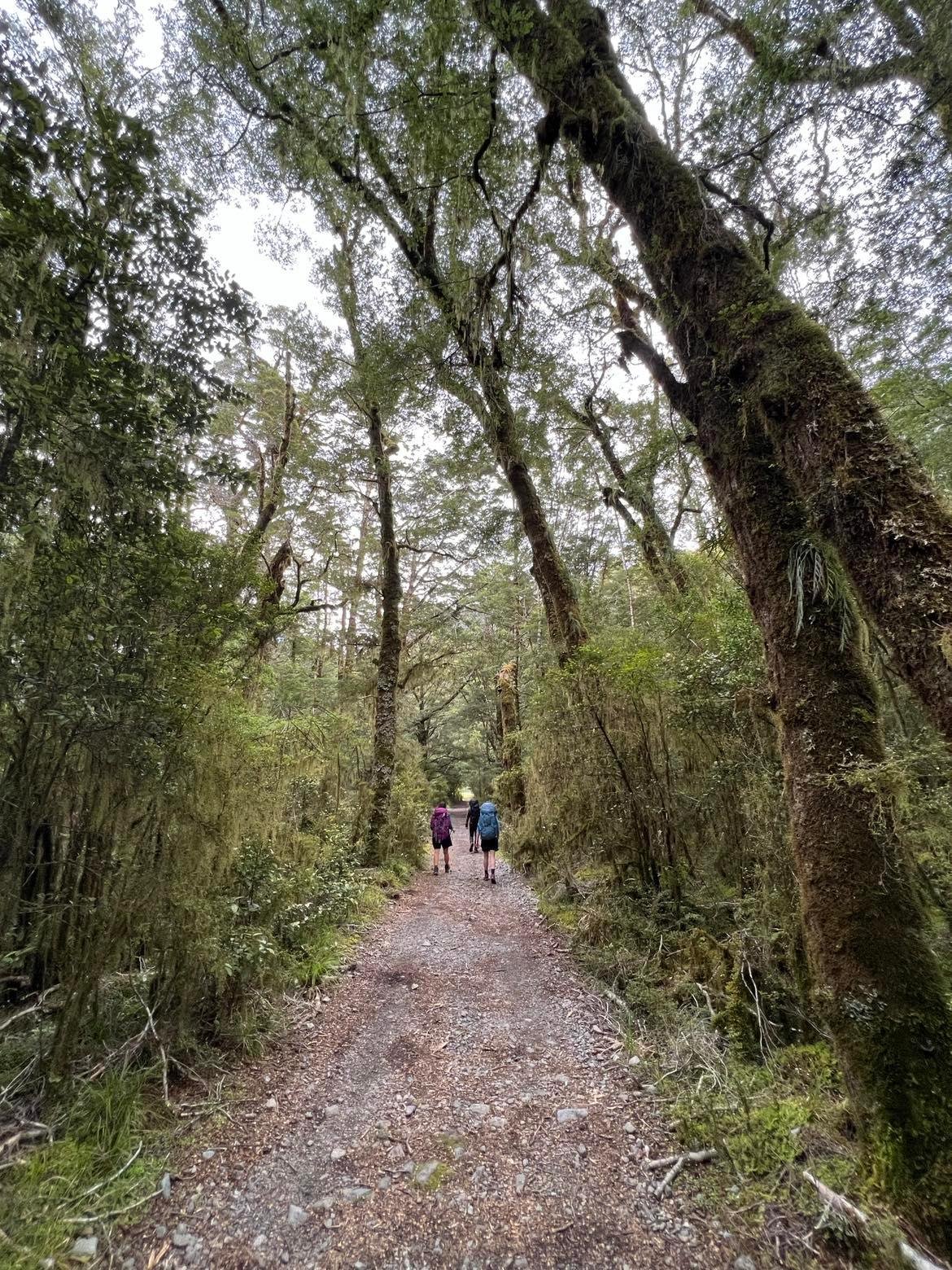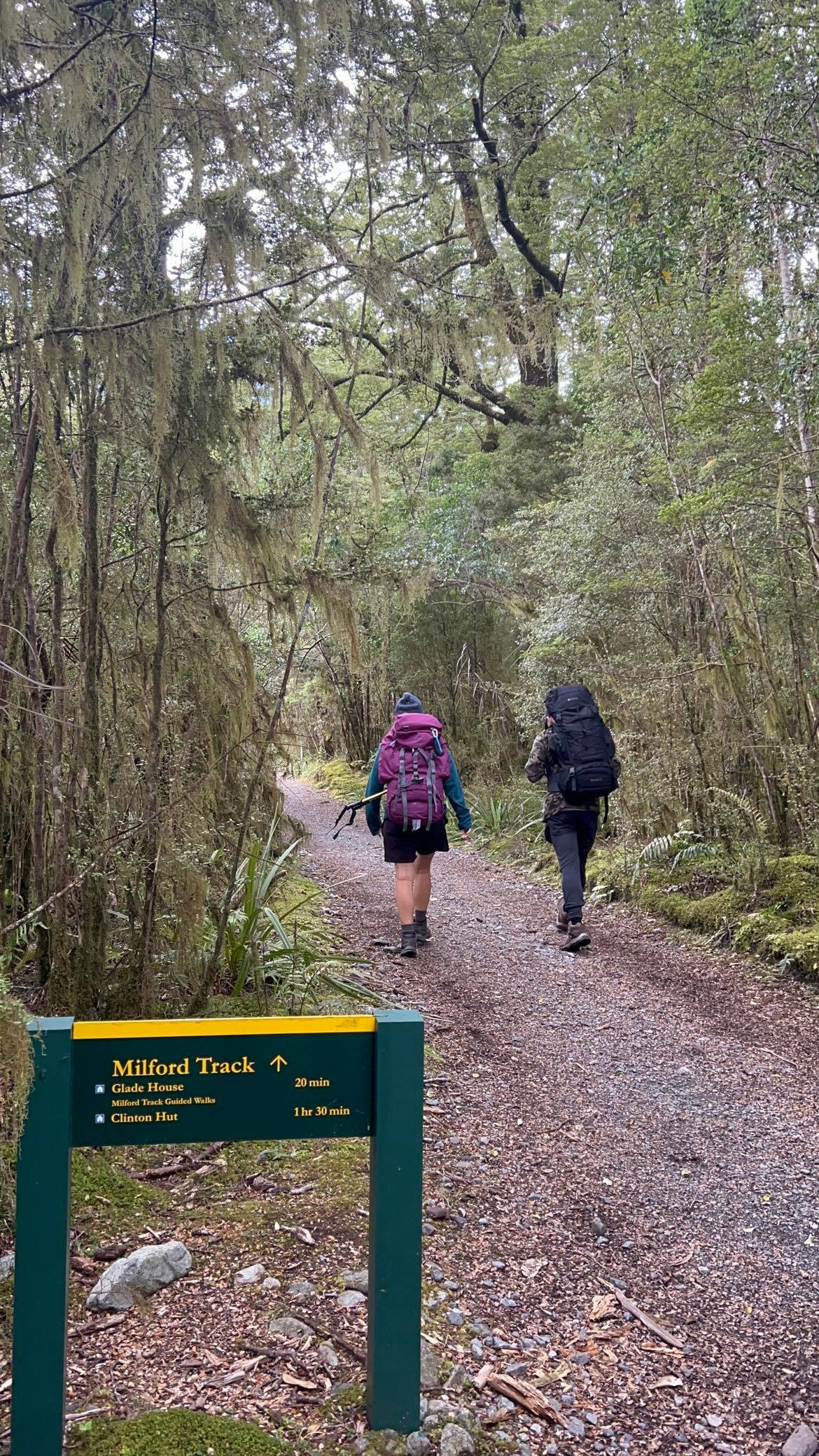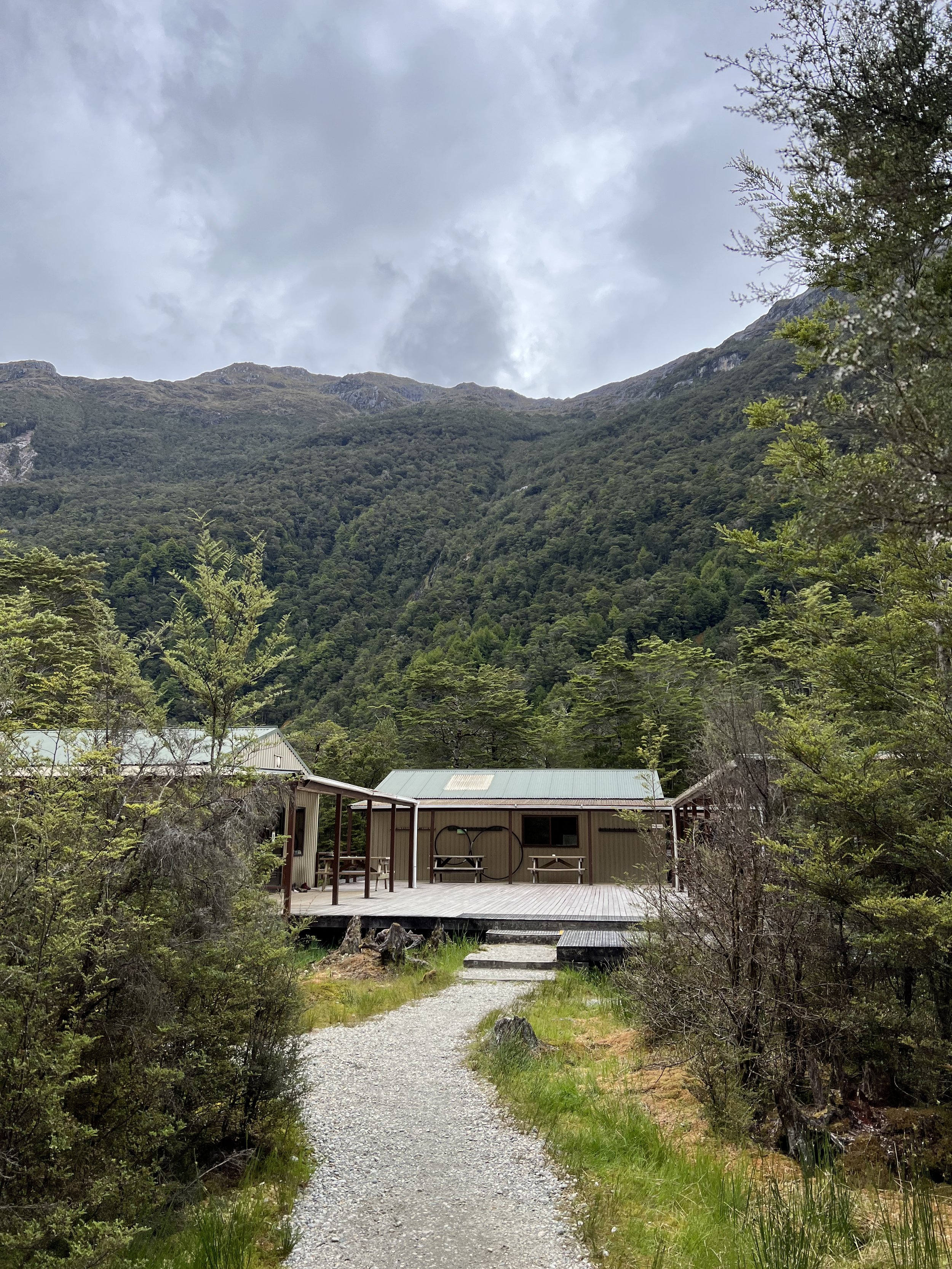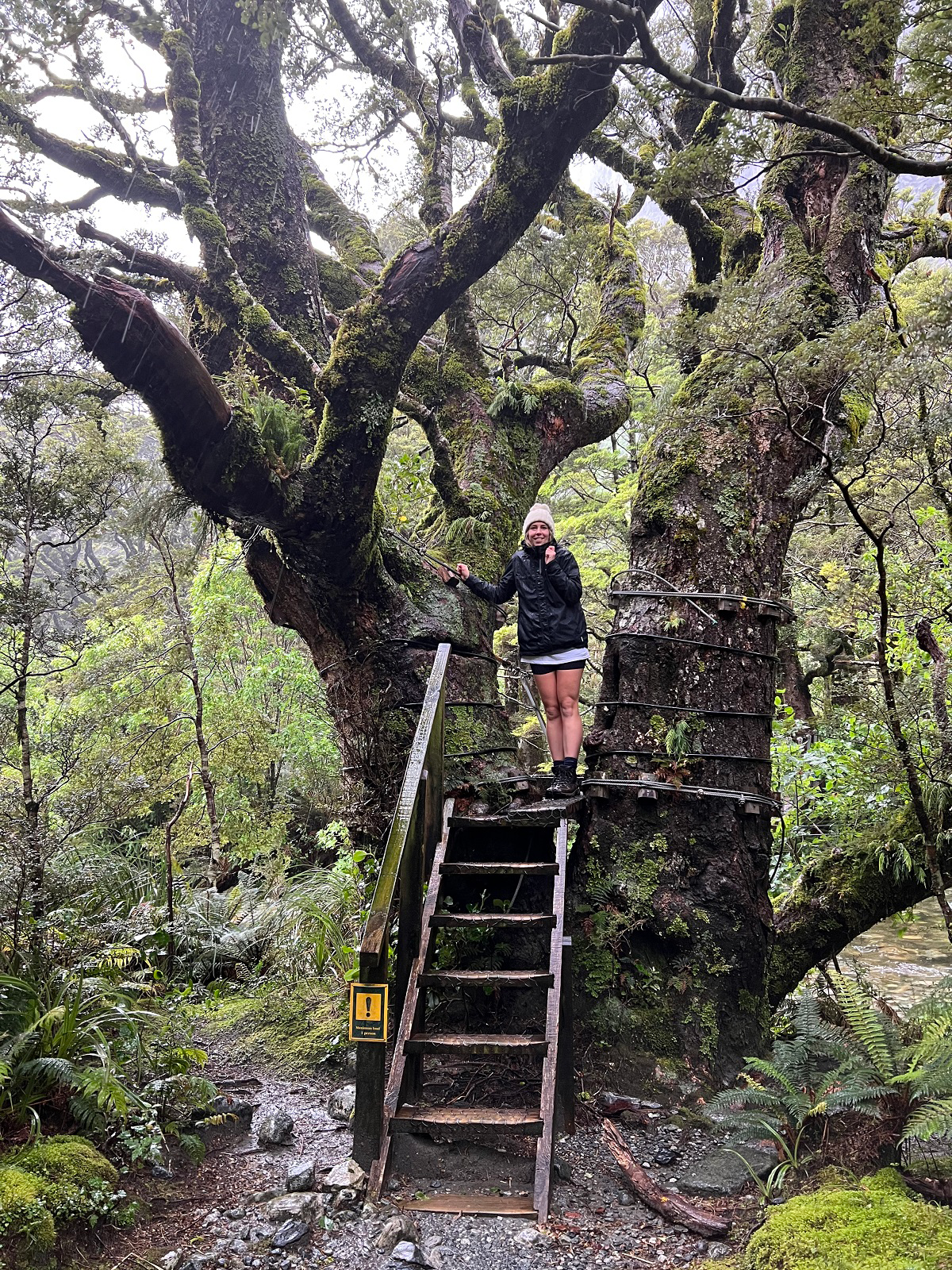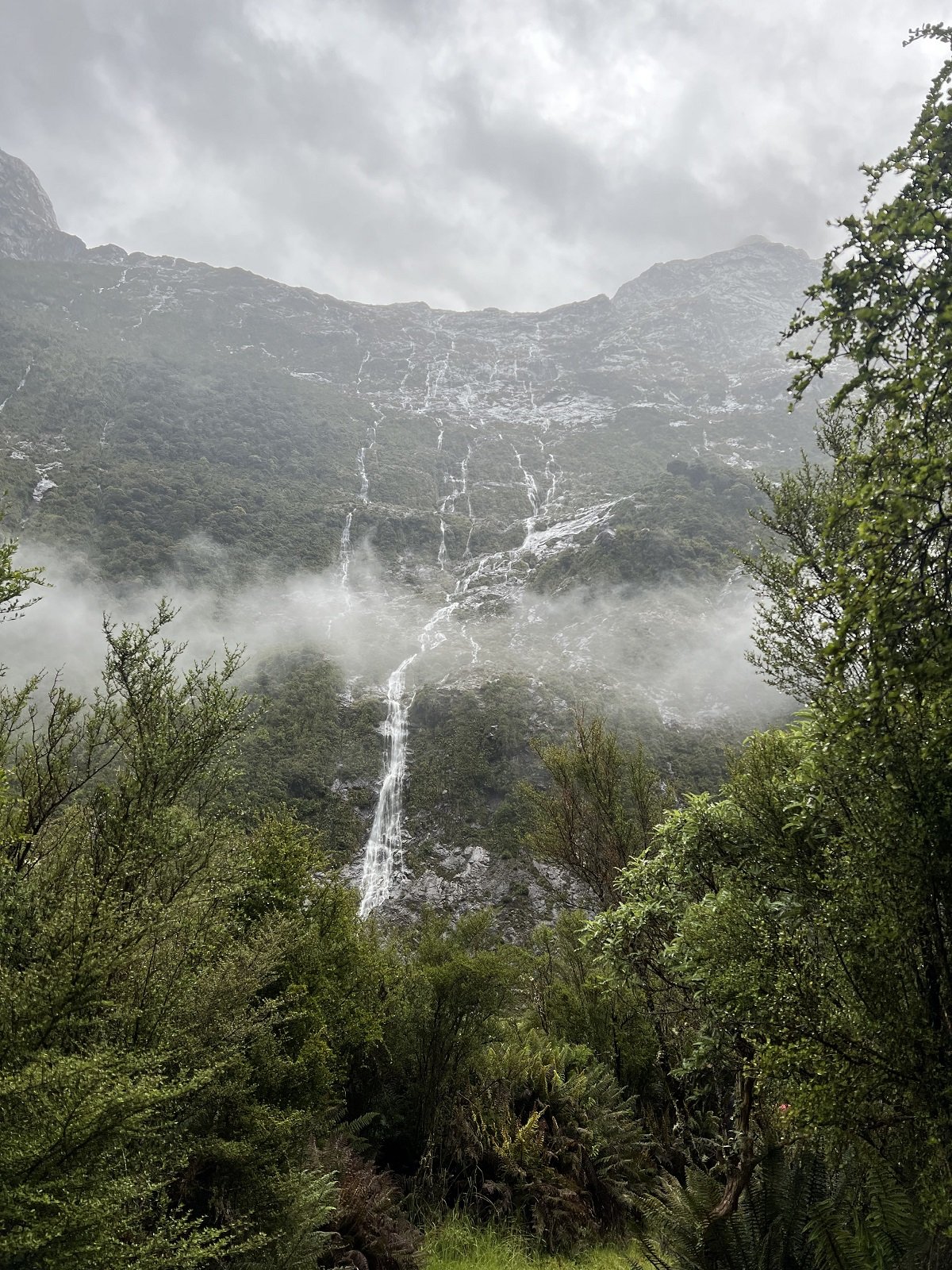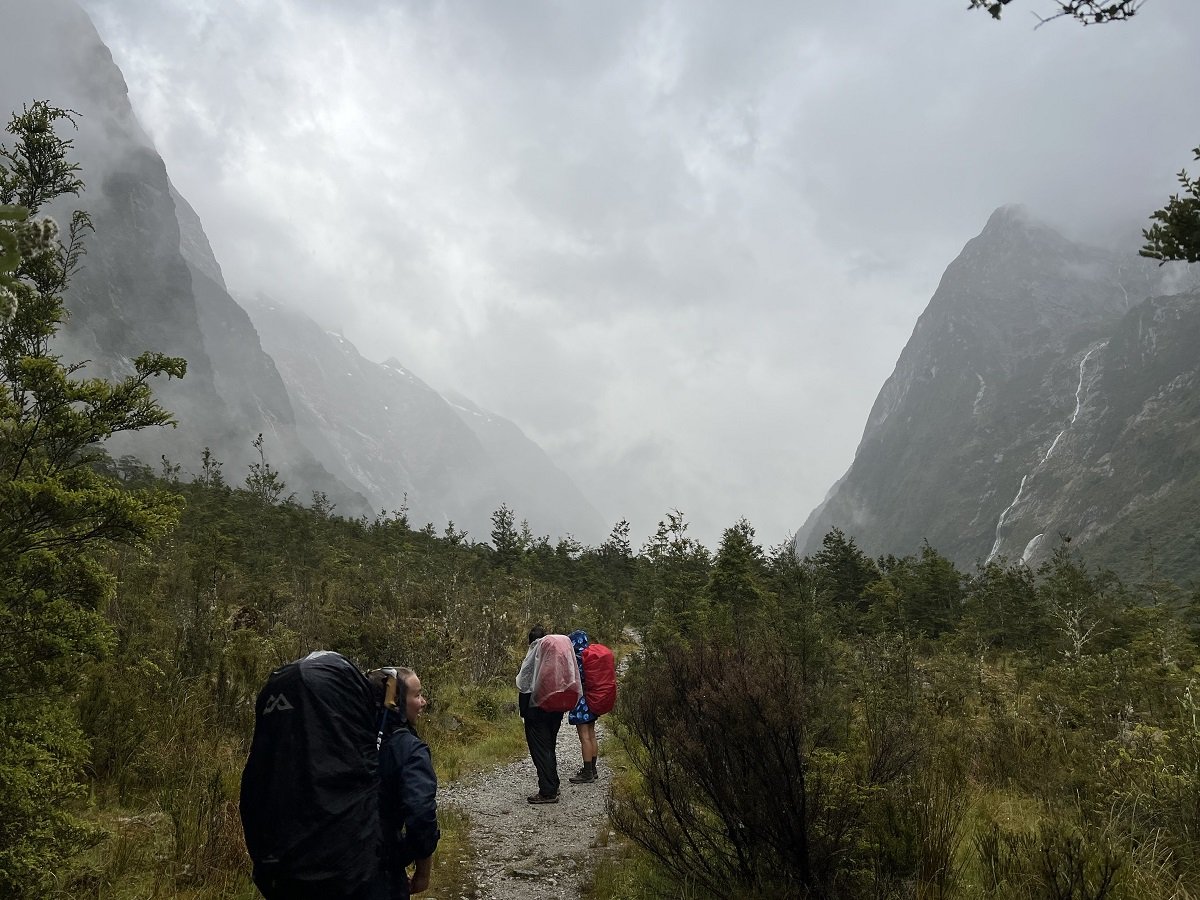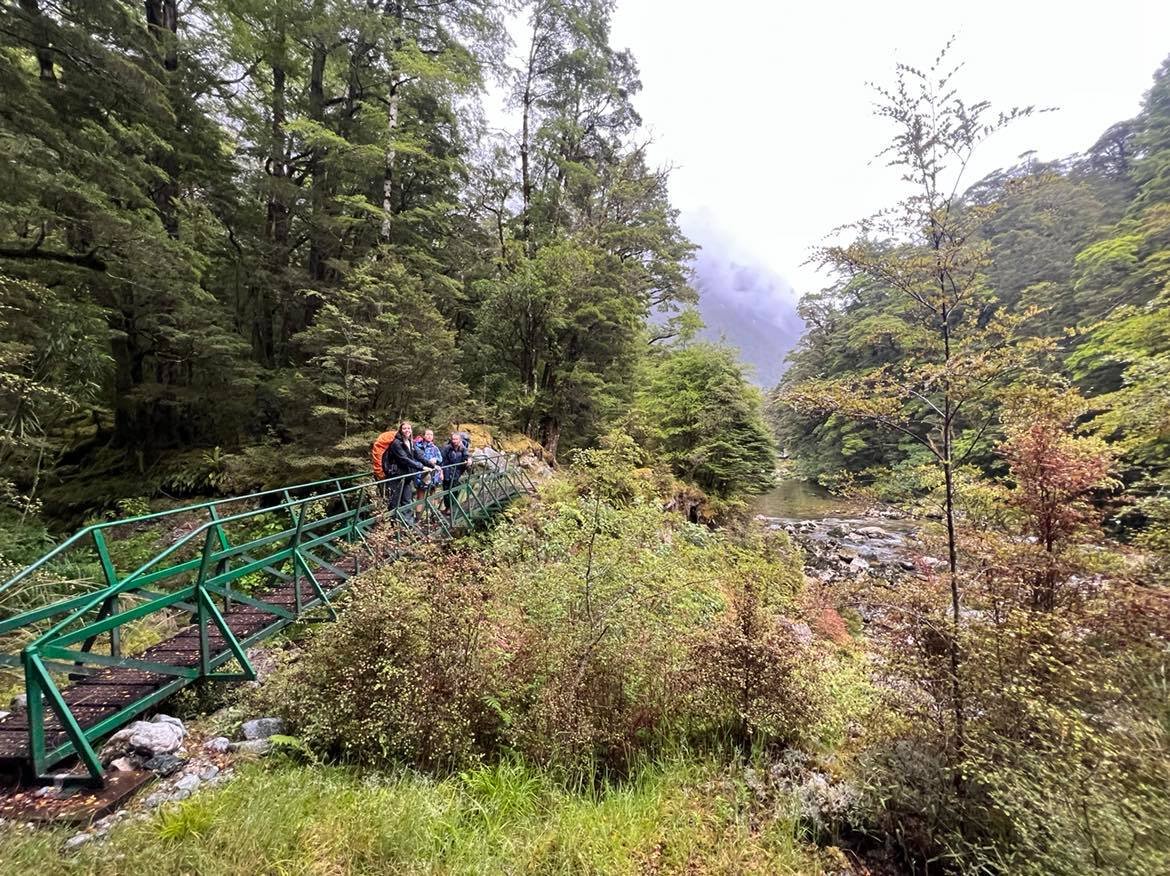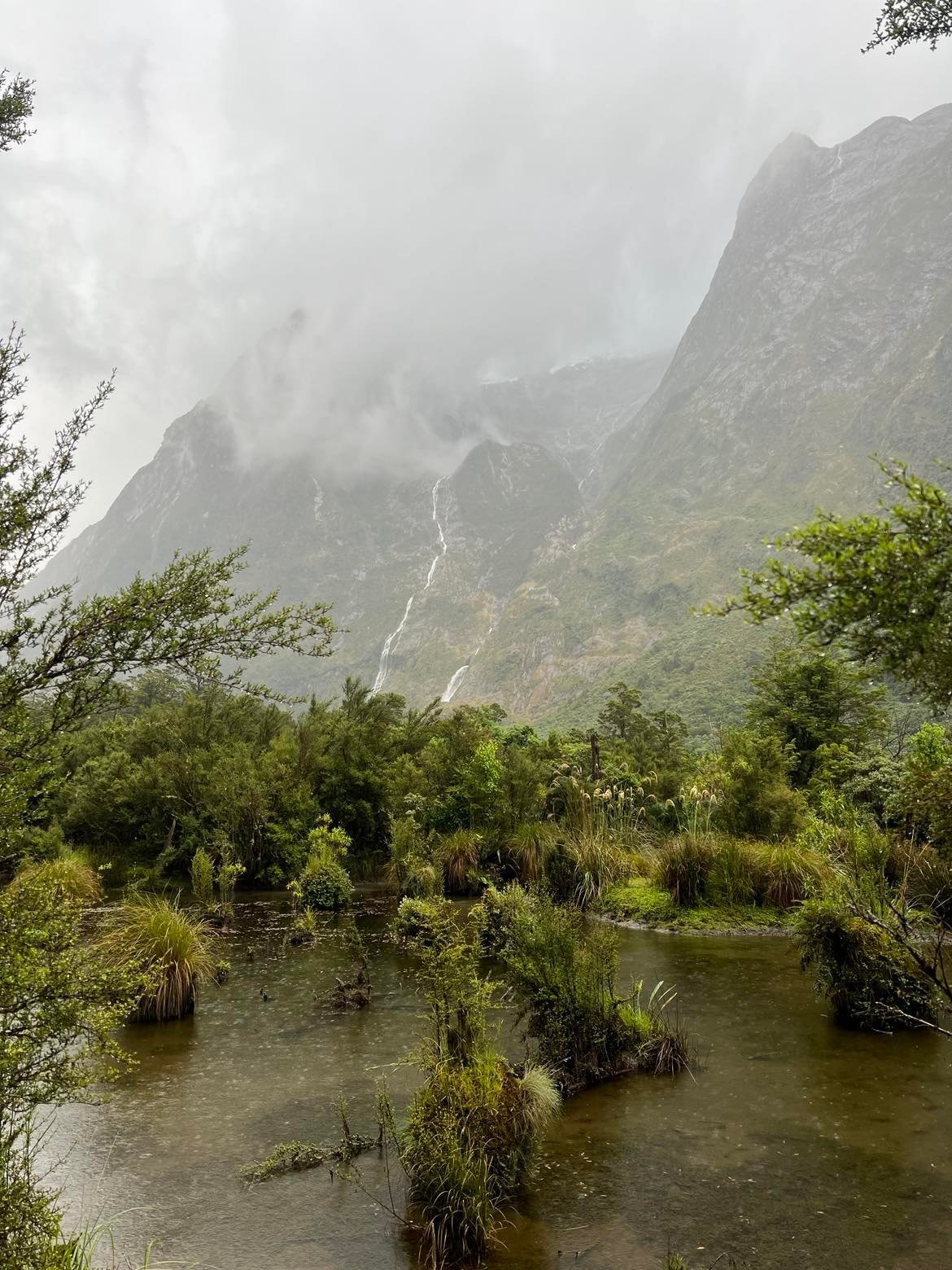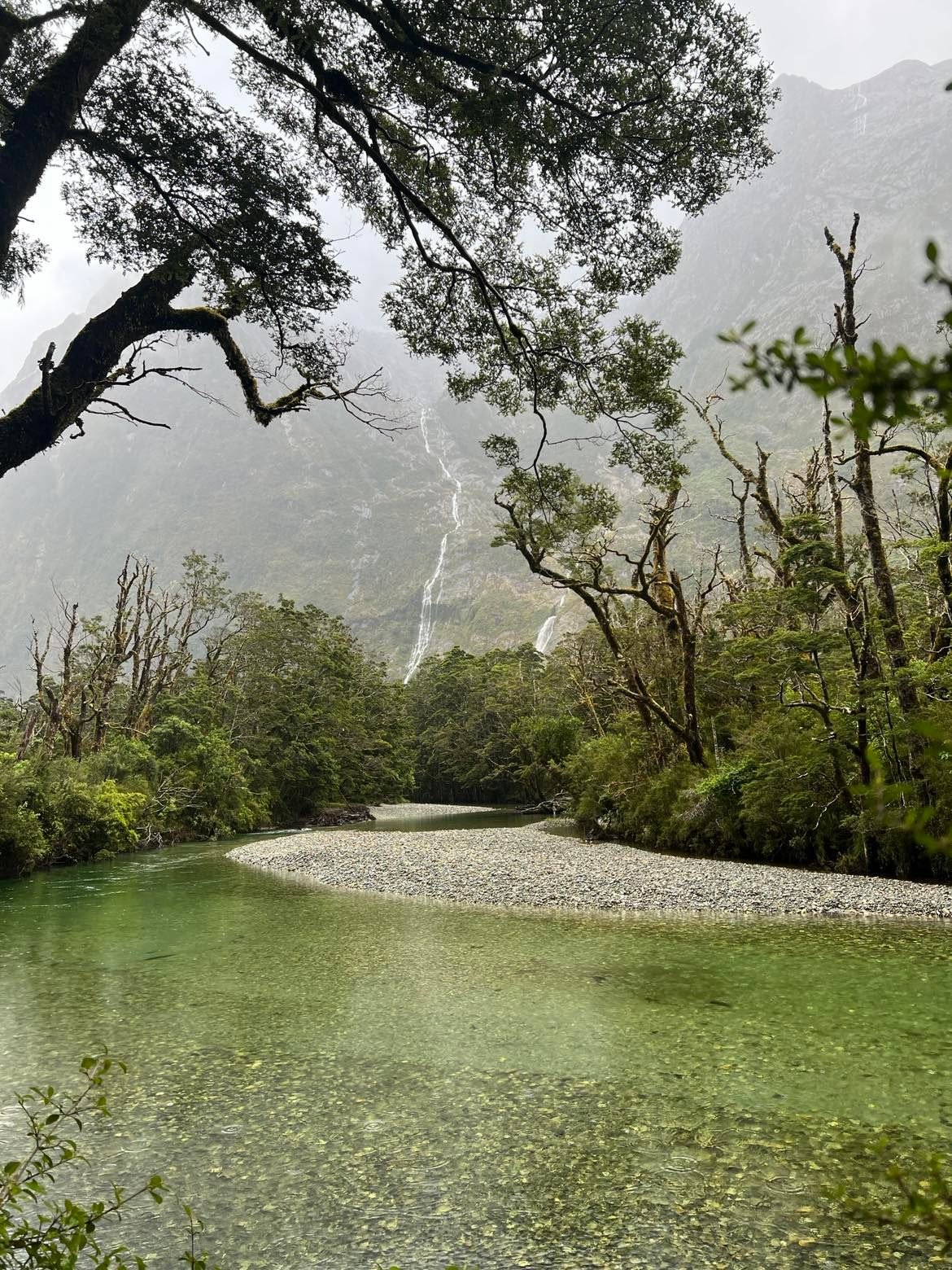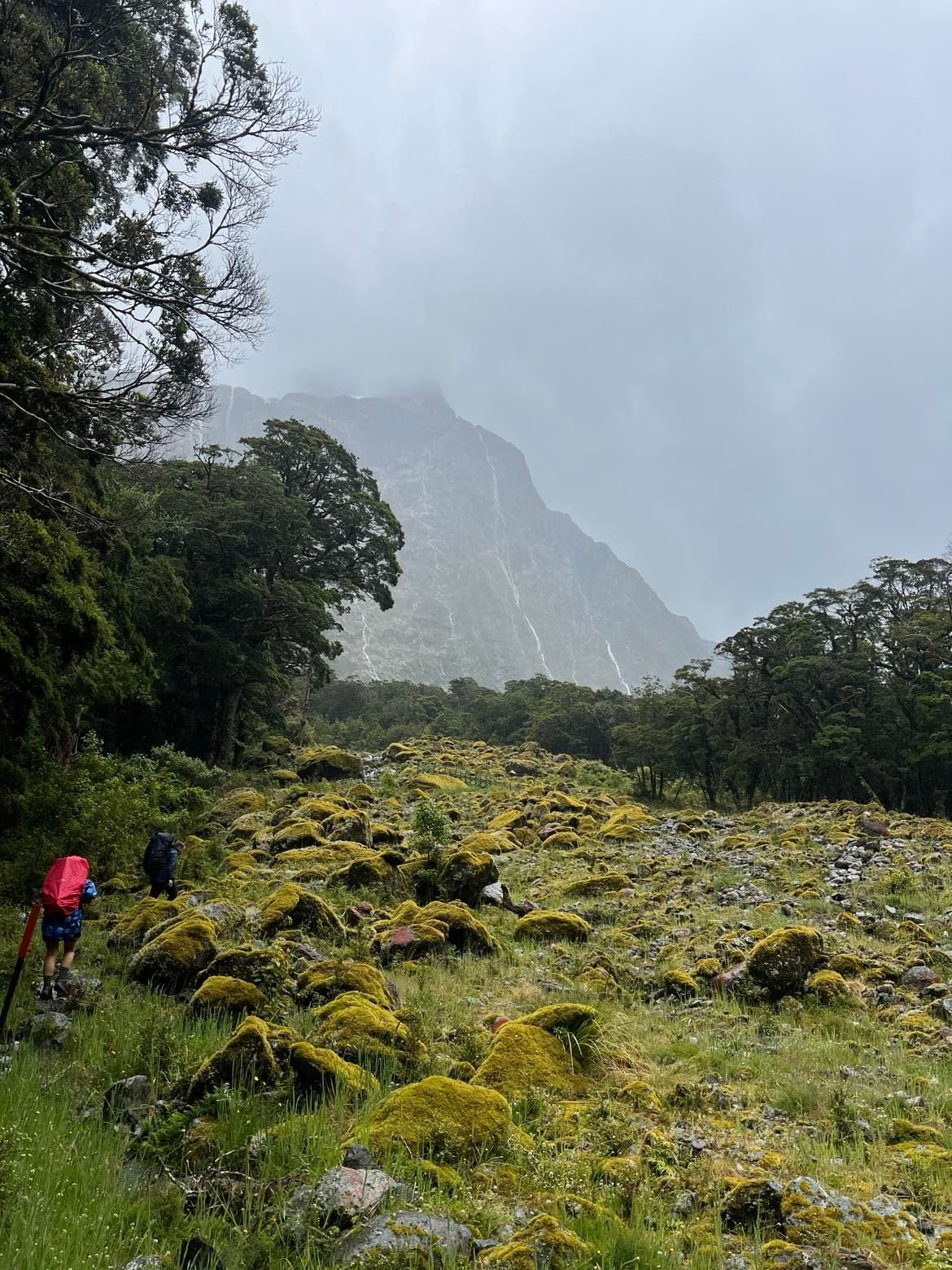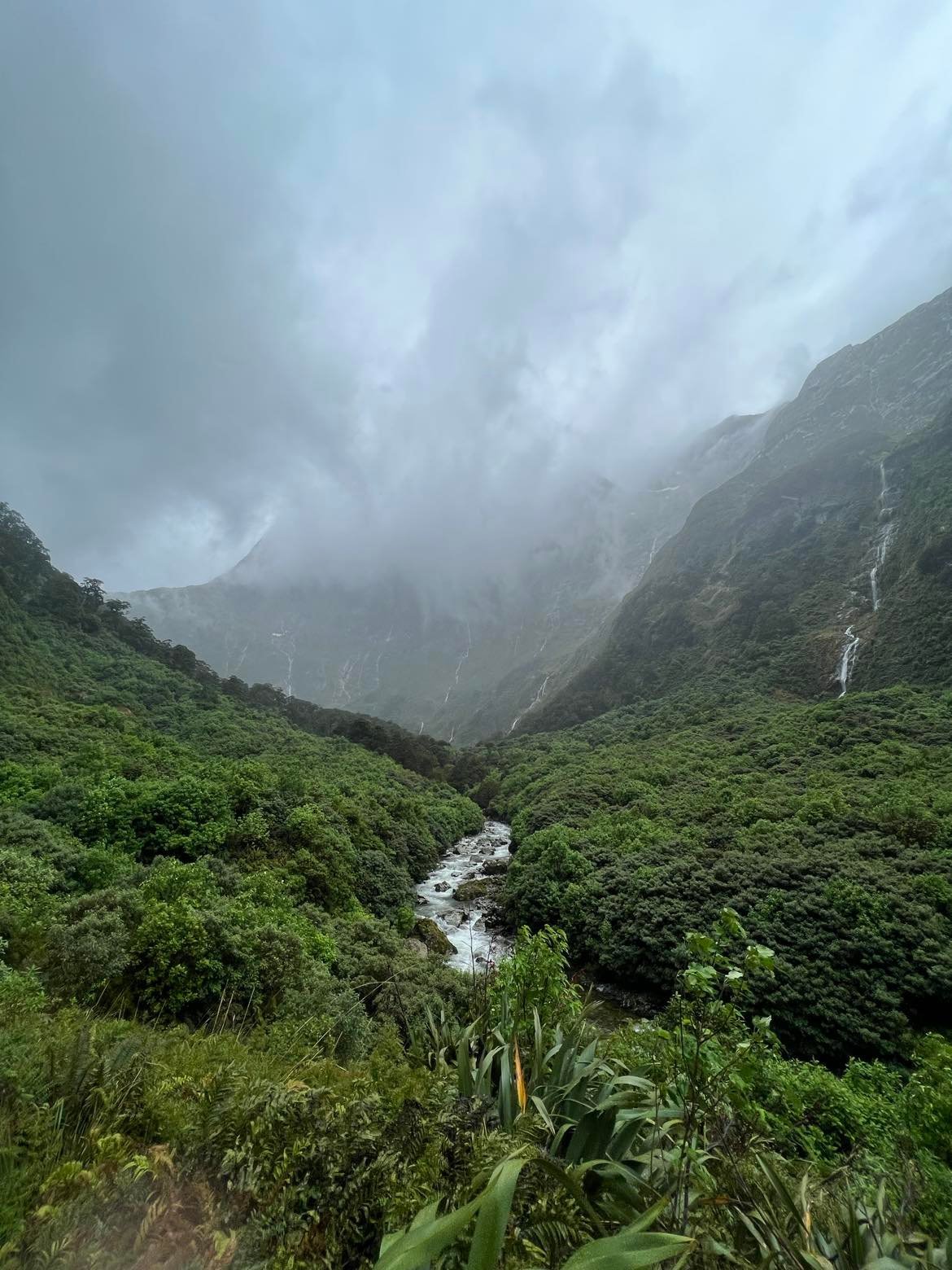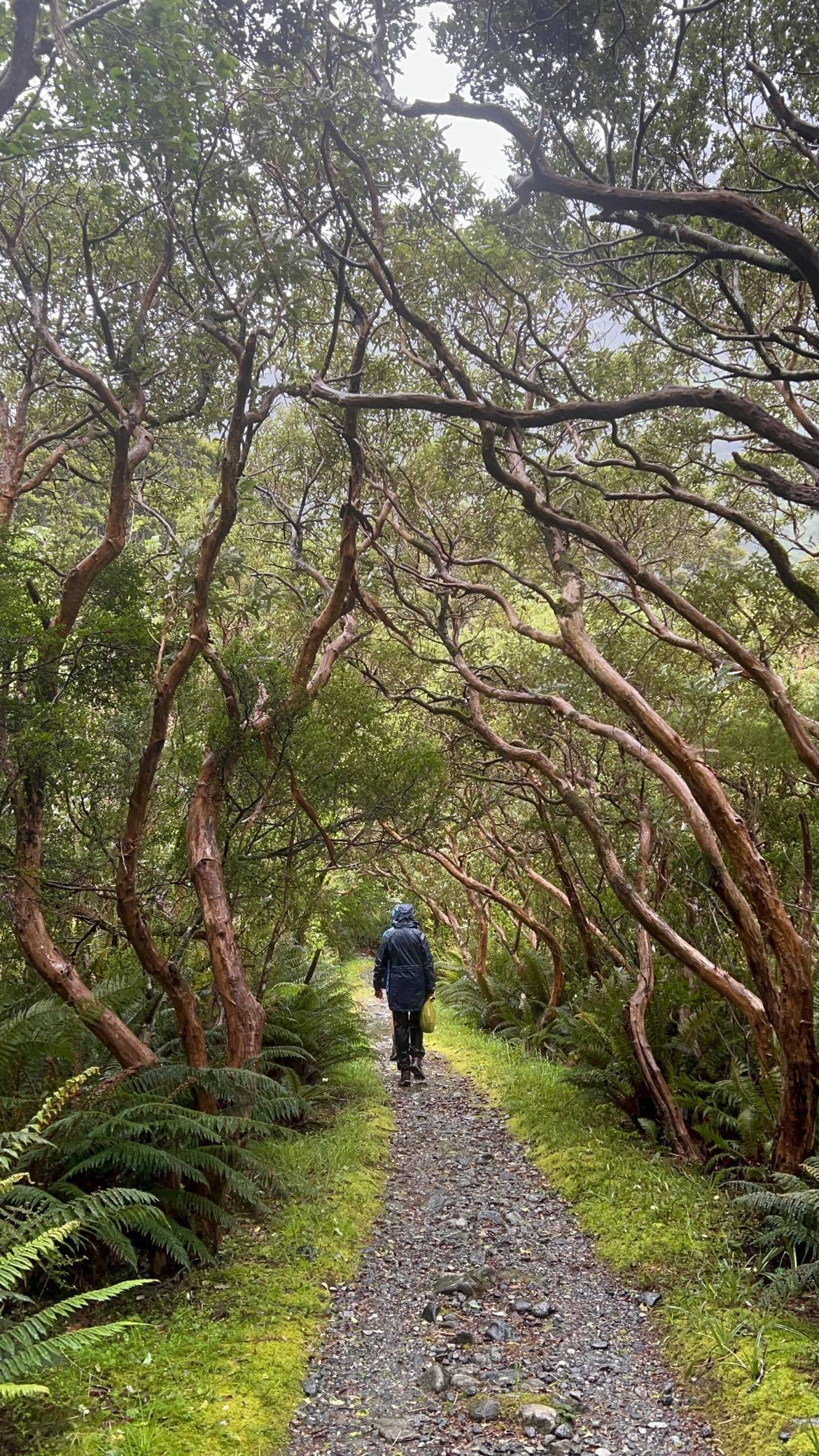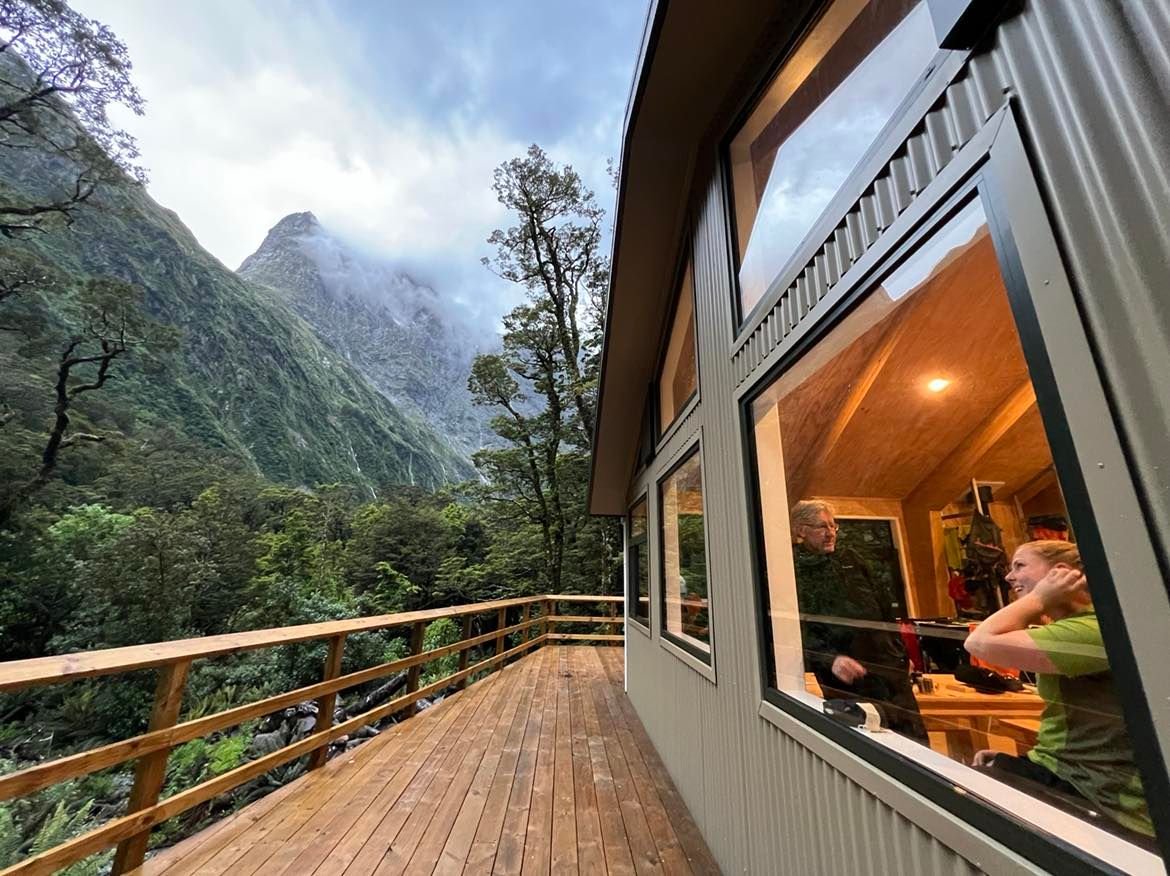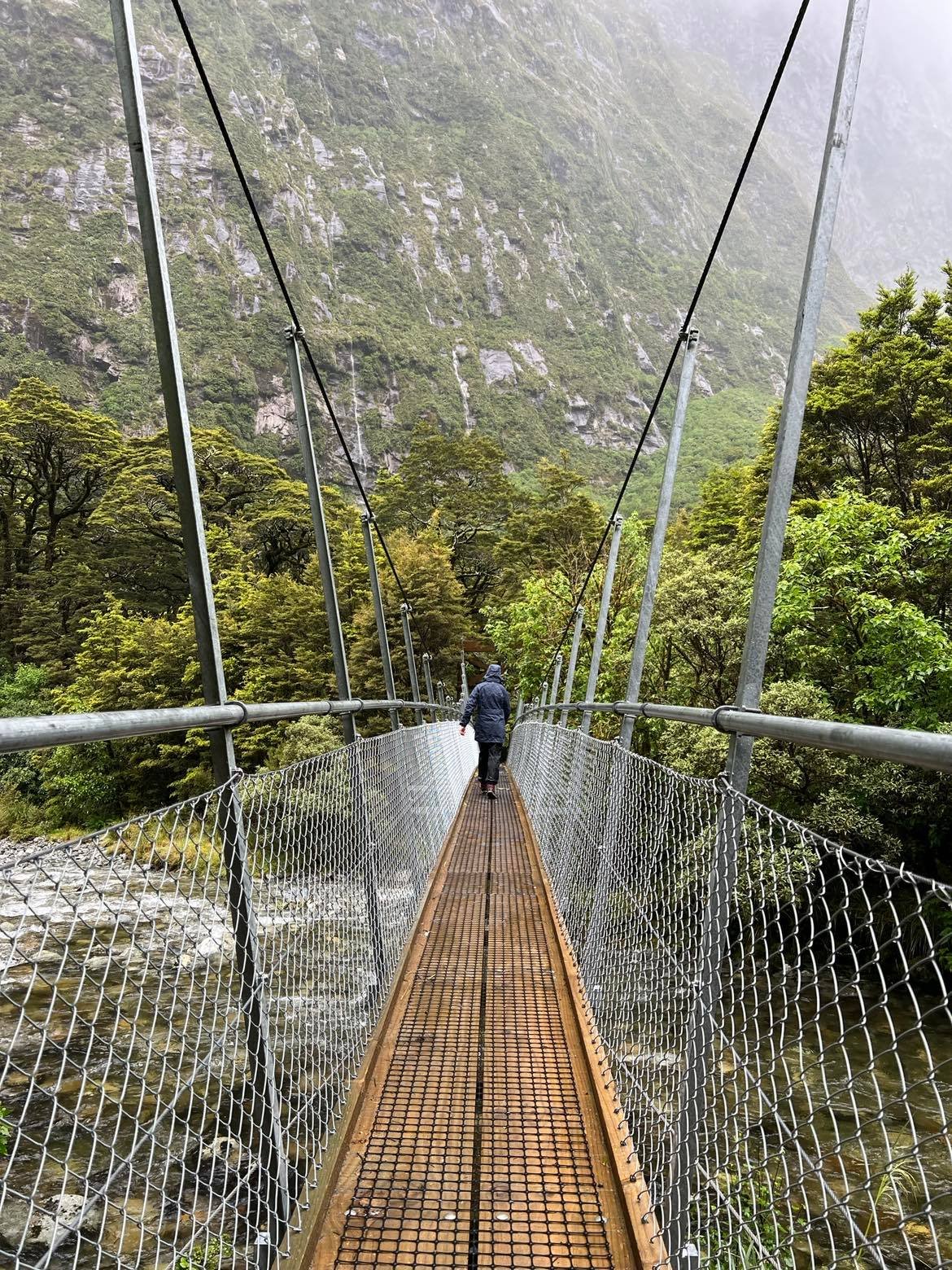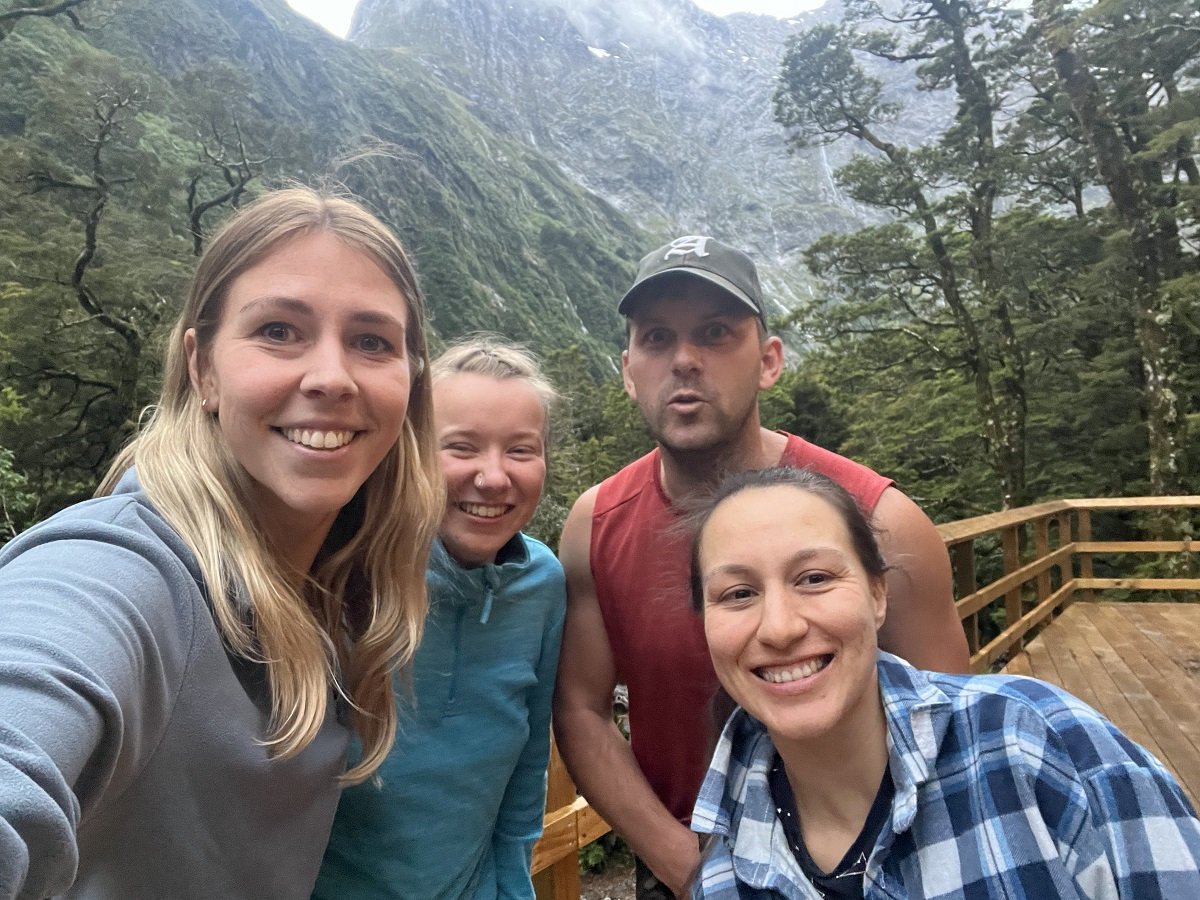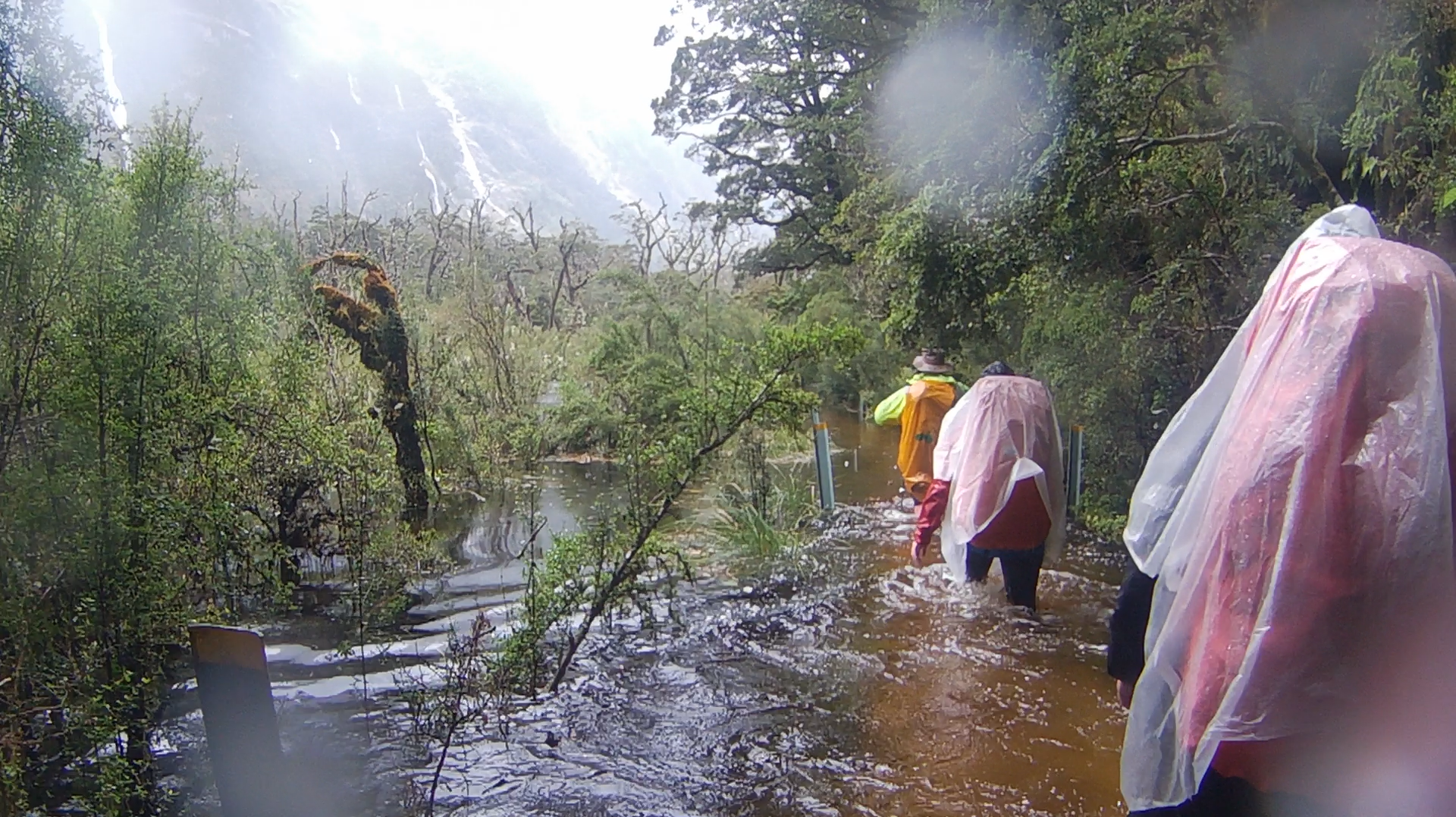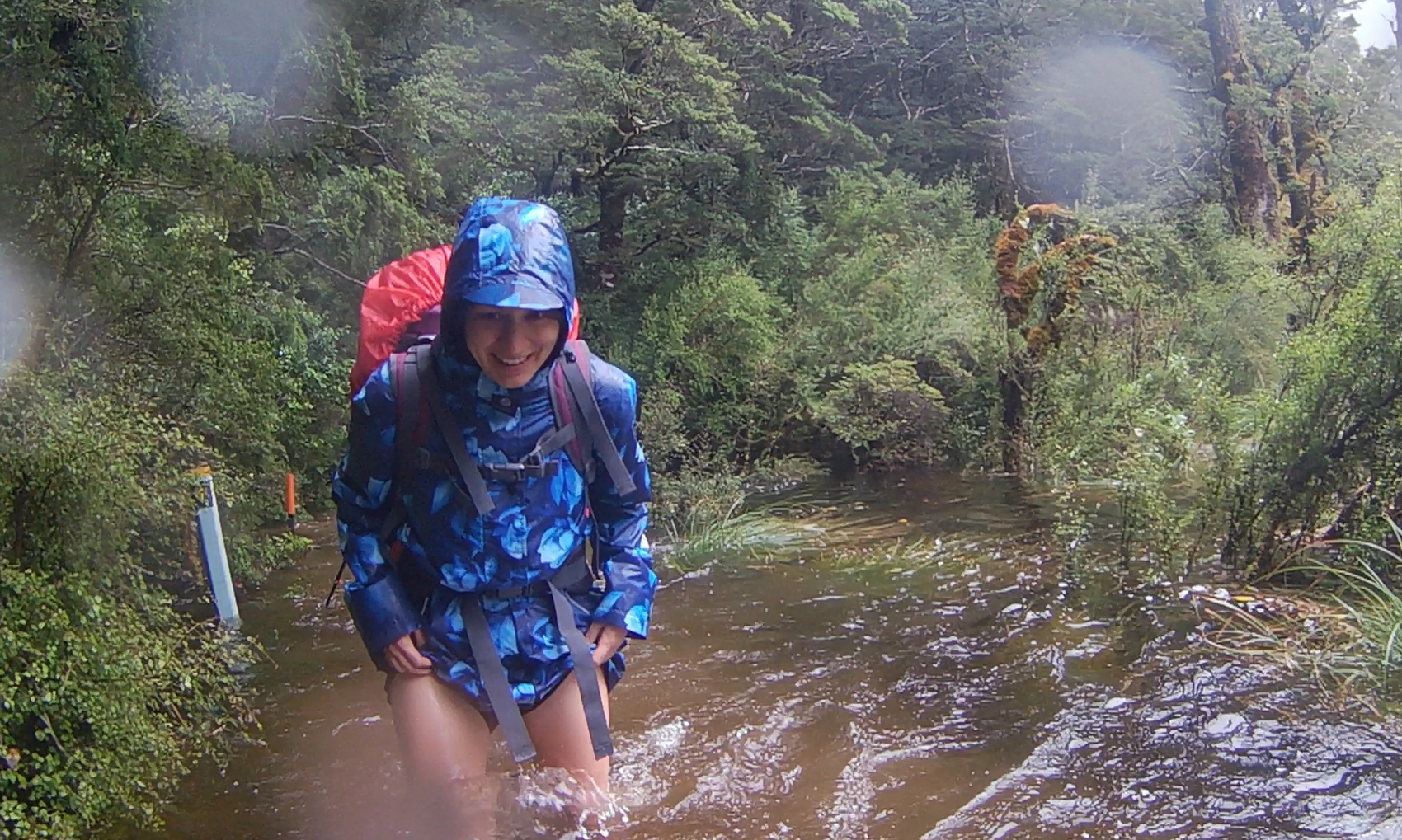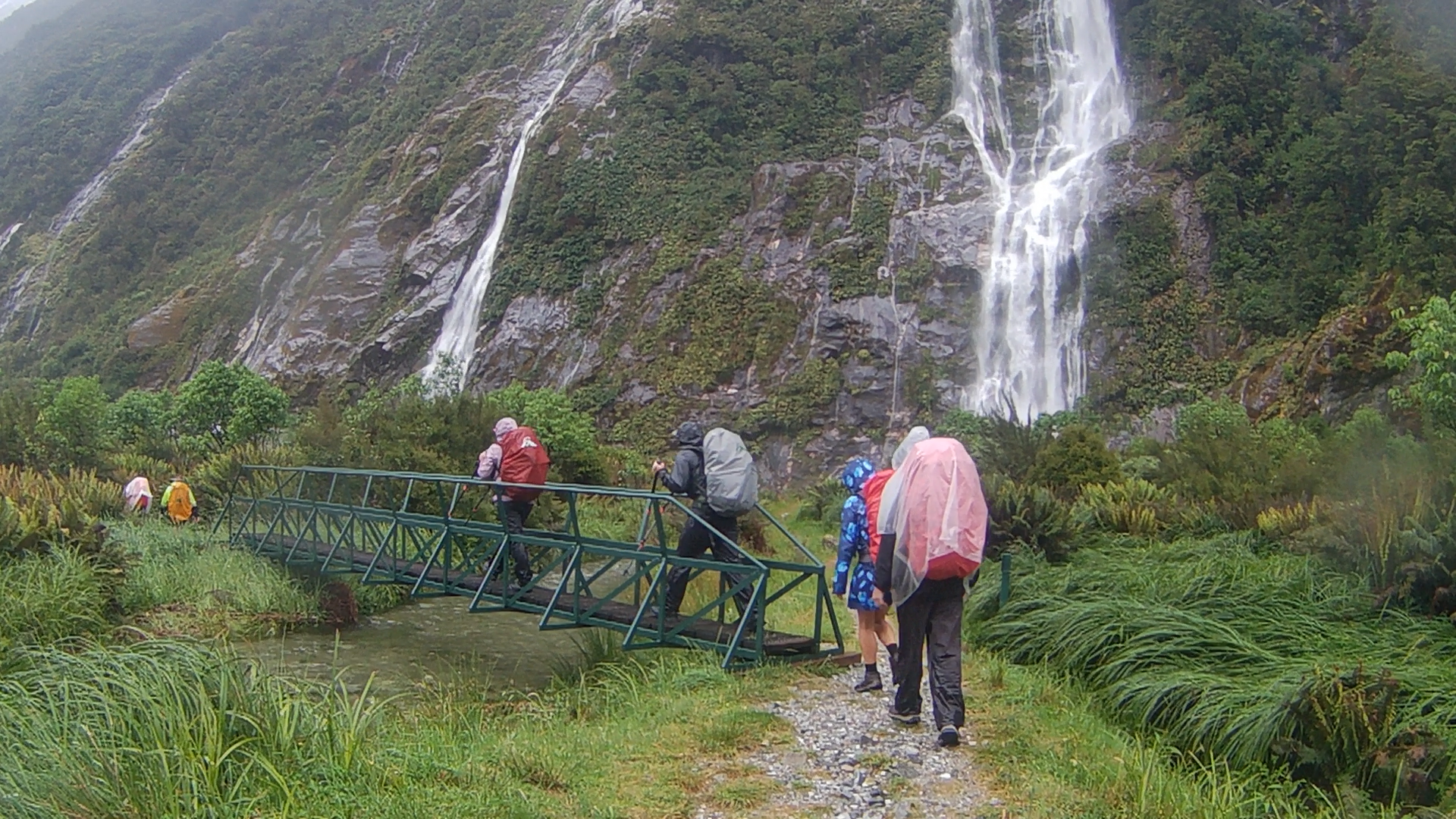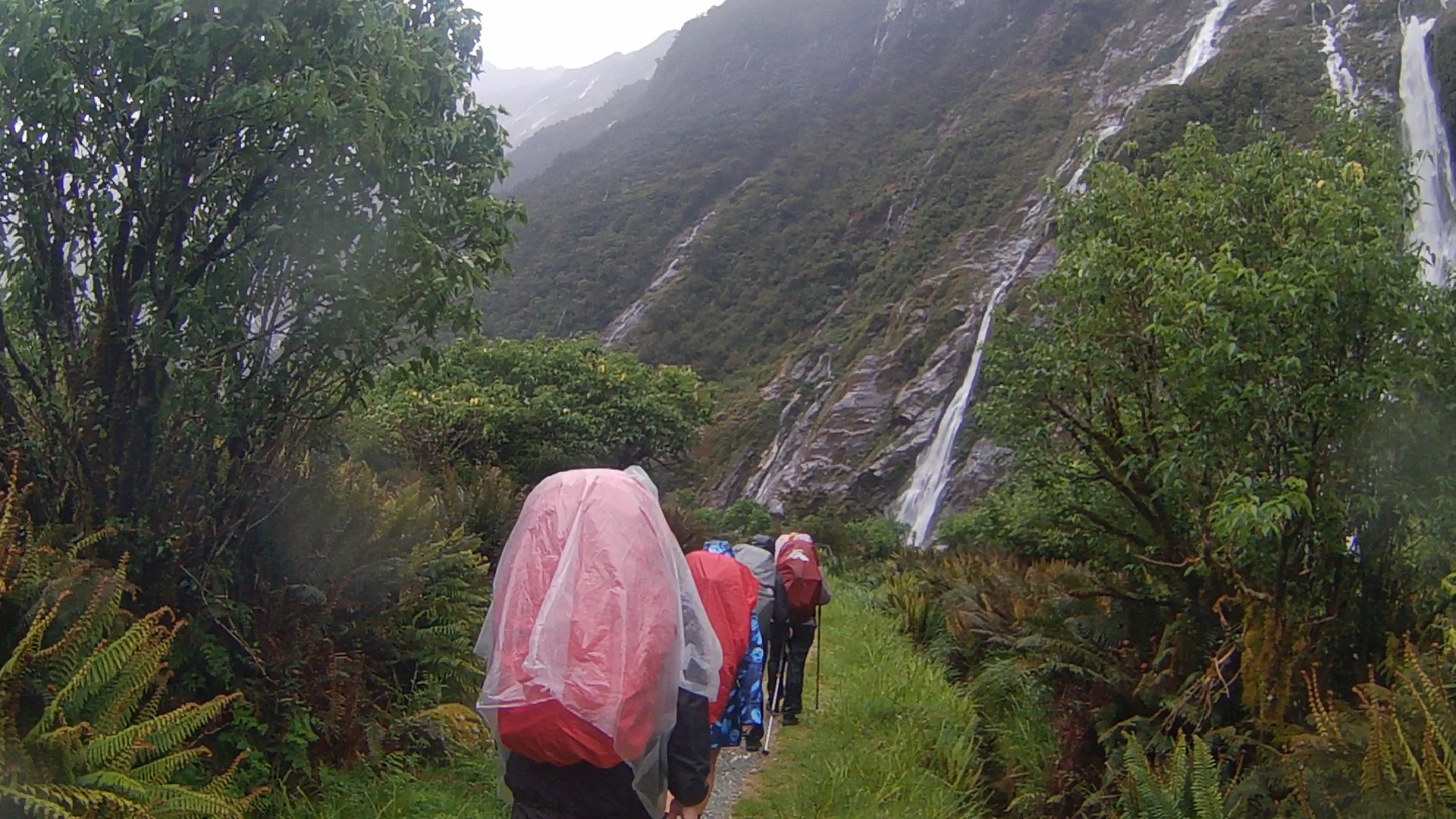Hiking the Milford Track
The Milford Track
There’s a reason why the Milford Track is often called one of the best hikes in the world. The 53.5km track takes you through ancient sub-tropical rainforest along a river, up and over a mountain pass and then down the other side through more beautiful landscapes, finally ending up in the Milford Sounds. New Zealand’s fiordland is one of the wettest places on earth and that is what makes it so spectacular. Lakes formed by glaciers and lush forests that haven’t changed since moa roamed through them, all brought to life by frequent precipitation.
At 9:29am on a cold day in June 2021, I sat at my desk with three screens open. It is notoriously difficult to book this trip, especially during peak season, Dec-Jan, so I was as prepared as I could be. When the clock struck 9:30am, I hit enter on all three screens and after a few minutes of processing, only one screen showed that there were four spots available on the dates I selected, so I hastily locked them in. It was a huge adrenaline rush but I had booked the Milford Track! Fast forward to December 17 and I was on a plane to Queenstown.
The Logistics
If you’re not into details or you’re not planning to do the hike any time soon, feel free to skip to the next section. The Milford Track is one of New Zealand’s Great Walks and because of that, huts must be booked in advance for the Great Walks season (Oct-Mar) through the Department Of Conservation (DOC) website and these huts book out very fast. The walk can only be done in one direction and you must stay at one hut per night (no skipping or delaying) so will end up walking with the same 40 people the whole way along. There is also no free-camping and with the weather being as wet as it is, you would not want to be in a tent!
Transportation to and from the hike must be organised in advance and there are a couple of ways to do it. You can self-drive, which is where you drive to the start of the track and have someone (usually one of the many companies down there) pick your car up and drive it to the other end. The other option is to use one of the companies which do it all, which is what I chose, even though I’m usually the DIY type. When I looked into the whole thing, it was a similar price for both options and easier to just book it all through one company. There’s also a ferry at each end that you need to pay for and by the time you factor in car rental fees and petrol etc, it doesn’t end up being much cheaper to self-drive, especially if you don’t have a full car of people. There are also guided tours and I’m not sure how it works but they might organise that all for you, as well as your food, water and some of the gear, I believe.
A dehydrated chicken meal
Gear wise, the huts had gas and little else, so you have to take all your food and cooking equipment with you, so travel light. We took dehydrated meals to share for dinner and then sorted our own breakfast and lunches. I took fruit, muesli bars, and a salami stick. And some lollies. And chocolate. I would HIGHLY recommend taking a little bit extra, in case you get stuck in the hut for an extra night as we did. Even a couple of packets of instant noodles, which are very light and only need boiling water, would’ve been wonderful. The other thing to note is there are no showers in the huts and no hot water so take some kind of washcloth. Your hut-mates will thank you.
The walk
Day 1
Once the ferry drops you at Glad Wharf, it’s a gentle walk to the first hut, the Clinton Hut. We went past the Glade Wharf Hut which is for the guided walks, then over a beautiful big bridge which crosses the Clinton River. We did the walk about an hour then secured our bunks, dropped off our heavy bags then went out to explore. We backtracked to the Wetland Walkway which was a beautiful clearing with views of another valley.
It was a great place for discovering the flora of the area, which is unique and beautiful. The DOC ranger at this hut took people on a nature walk, but our friend used to be a guide on the Routeburn so we had our own teacher. She showed us native plants whose leaves smell like ripe mangoes and others that taste like pepper, and told us all sorts of interesting facts about the local ecology. Thanks Anna! Christina and I decided to go for a walk along the river after dinner, which is a beautiful walk, and we’re glad we did because the next day was a lot wetter and we did much less sightseeing. Once darkness was looming we headed back to find the whole group asleep in the two sleeping huts. An early night for a big day ahead.
Day 2
We woke up early on day 2 to get a head start and try beat the incoming rain. The track took us further along the valley which was beautiful and lush, before winding uphill to the base of the McKinnon Pass where the second hut is located. This section of the track wasn’t very hard. There were quite a few river crossings and waterfalls along the way which was lovely. We did it in about 5 hours, not counting the stops for photos and food. The rain had picked up mid-morning and was bucketing down by the time we reached the Mintaro Hut so we were quite relieved. The only stops on the way were shelter only, and with the weather as it was, we didn’t stay too long. My favourite part of the walk was the big swing bridge which was wedged between two giant trees on either side of the river. With the forest around us all green and glistening from the rain, it felt like the forest in an ancient fairy tale.
At the Mintaro Hut, the ranger told us that there was a likely chance that we wouldn’t be able to make the crossing the next day due to high winds and the heavy rainfall. We spent that evening hopeful that it would clear by midday and we would just be starting a bit later than planned. We were wrong.
Inside the Mintaro Hut where we were stuck for an extra day
Day 3
This was when we realised that we should’ve listened to the lady at the DOC hut who warned us to by extra food in case we were stuck on the track for an extra day. We thought we would be fine as each of our dehydrated meals were for 5 people and we were sharing between 3. We were wrong. Since we did not have extra food for the next two days of hiking, we decided to ration our food and not eat much at all. Which is fine, when there are other things to distract you. Christina, Anna and I went for a walk around the area, sticking to the track, but we were not allowed to continue on further at all that day, so we went back in to stay dry.
Making the most of a side adventure while we couldn’t continue on the main track
Apart from the lights in the hut which are on a generator, the only power source available to us was solar power. Famously, no good on stormy days. So, to avoid draining our phone power, we tried entertaining ourselves the old-fashioned way with the little resources we had. We played a few card games and read some of the limited reading resources at the hut and then in the evening, the hut ranger did a quiz for us. The prizes were food and some kind people gave us some of their extras.
My advice to anyone doing the hike (and this is probably just common sense for anyone who has done multi-day hikes before) is to be prepared to be stuck in a hut for an extra 24hrs. Extra food, some tea bags or hot choc sachets and a puzzle book would go a long way. The ranger let us know that we would be given the all clear by 10am the next day about being able to continue. The three of us who came from Auckland made the tough call to turnaround the next day and try get the 4pm ferry back and return to Queenstown for our flights, which were scheduled for Day 5. We could’ve potentially gone on and finished, but if there was a single delay on Day 4 or 5, we would’ve missed our flights and trying to fly back to Auckland only a few days before Christmas would’ve been incredibly expensive and potentially not even do-able with reduced flights due to Covid. And even worse, we would’ve had to walk straight onto the plane in our sopping wet hiking gear as the bus was due at the airport at the same time they closed the boarding. I just knew it would’ve been a horribly stressful situation but our plan to return wasn’t easy either.
Day 4
Walking back down through the valley was anything but the easy option. We had to make it to the ferry by 4pm and we only got given clearance to leave at 10am. That meant we had to do Day 1 and 2 in one day, which meant 6 hours of walking within a 6 hour window, so no stopping. On the way down, the hut ranger actually came with us and at one stage, there was mention of being flown over a section of the valley that was flooded. No luck for us though, as closer to the time they decided it was just safe enough to walk and so our hopes of a fun helicopter ride were shattered.
In spite of the time pressure, sore bodies (did I mention I had several large blisters from Day 2?), hunger and the incredibly wet journey (we were practically swimming in parts where the water was waist-high) we actually had a bloody great time. The valley seemed to come alive in the rain with waterfalls appearing in the dozens and the forest becoming more vibrant than before. We kept a really good pace as the first half was all downhill and we had come to accept that it was impossible to keep our feet (and legs and bums) dry so we just splashed on through with smiles on our faces. We did not get to see the other half of the Milford Track, but we probably had an experience that few others get to have.
Along the way, our ranger had managed to get in touch with the ferry company who had agreed to wait, so a bit of the pressure was lifted about halfway through, but we started to get pretty fatigued and sore so we powered on anyway and made it with time to spare. But if you thought we were clear of any issues, Christina dropped her phone and portable charger in the lake when we were getting onto the boat. Our ranger dived in to try and find it but sadly it was too deep. We thought it was gone forever but a few months later, I got an email saying that it had been found! Luckily it worked so she got all her photos back which was the main thing. The reverse journey back to Queenstown was a bittersweet one. But we were glad to be warm and dry again and our journey to the airport the next day was a lot more enjoyable than it could’ve been.
Tired smiles from the last day of the magnificent Milford Track
Have you done the Milford Track yet? Keen to?



